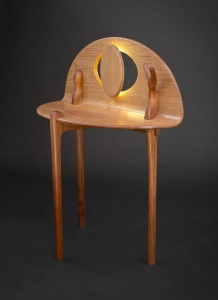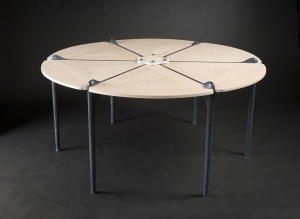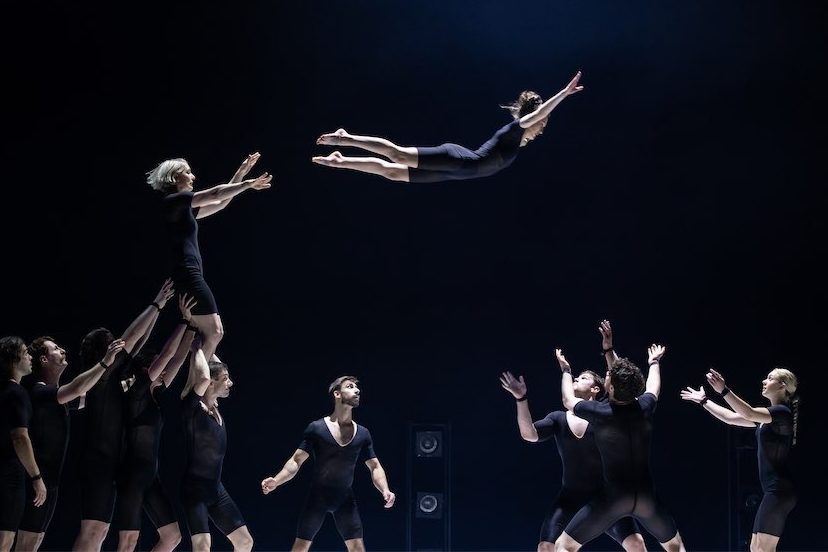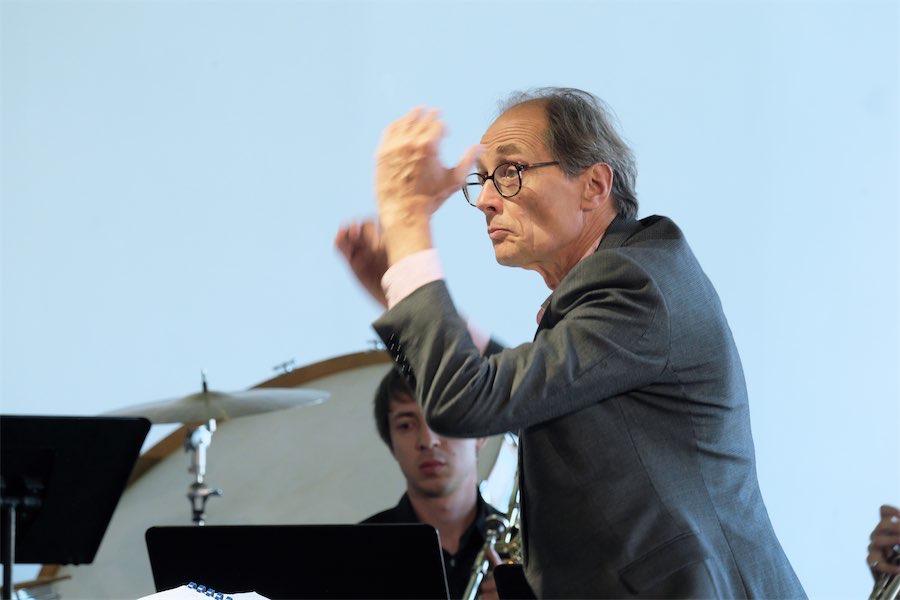THE GENESIS of this collaborative exhibition was the need to furnish a house that was primarily a series of four interconnected ovals.
 Ceramicist Malcolm Stewart built a house outside Melbourne. Curved furniture was required to complement the curved walls.
Ceramicist Malcolm Stewart built a house outside Melbourne. Curved furniture was required to complement the curved walls.
A neighbour, Ian Higgs had devoted his working life to make ‘beautiful and wonderful’ things – which included interpreting the designs that Stewart brought him.
Dean Bell, a nephew, was brought in to use another material – in this case metal. Several tables have metal supports or legs, and this is where Bell’s expertise came in.
The exhibition is titled “Ten Tables” – but in fact there are fifteen. And they are all big! Their size probably limits them to a corporate environment, or at least a house with generous-sized rooms. Not only do they have a large footprint, but several have high, or big decorative elements that often form an integral support.
 Table 11 is square, from Bamboo Ply with fabricated steel edging and a curved base. The steel protrudes through the top. I find this a non-functional element and intrusive. Generally, a table has a smooth top for a purpose – so that it can be used. The figured bamboo is a dynamic element, contrasting in colour with the steel.
Table 11 is square, from Bamboo Ply with fabricated steel edging and a curved base. The steel protrudes through the top. I find this a non-functional element and intrusive. Generally, a table has a smooth top for a purpose – so that it can be used. The figured bamboo is a dynamic element, contrasting in colour with the steel.
Table 2, is a circular table in limed American oak, a pale figured timber. The table is divided by dark timber strips into six segments which continue to form the slender legs. However, this decorative element limits the use of the table. Each of the dividing strips is raised at the rim of the table, distinctly separating each segment, and a central raised, medallion covers the joins. This table can only seat six people, each with their space contained. The six legs further restrict its use.
 The exhibition includes a wall table, Table 5, which is also quite large. It is hemispherical with a curved back, almost as though a circular piece of timber has been folded in the centre. A carved oval-shaped depression in the centre is also reflected in the cut-out back.
The exhibition includes a wall table, Table 5, which is also quite large. It is hemispherical with a curved back, almost as though a circular piece of timber has been folded in the centre. A carved oval-shaped depression in the centre is also reflected in the cut-out back.
Another oval-shaped piece of timber, placed vertically, hides some LED lighting. On either side of the ovals, two different pieces of timber appear to pierce the top and continue to become the legs. A third leg supports the centre of the table.
The furniture is all expertly made – it is finished superbly. However, I find it rather too imposing and over-designed. The added decorative elements, even though they often are the supports, are overwhelming.
While collaboration generally gives a superb result, in this case I believe the different contributions have not been sufficiently worked through to give a pleasing result. I can see the three artisans have made remarkable contributions but there is a lack of an overall aesthetic.
Who can be trusted?
In a world of spin and confusion, there’s never been a more important time to support independent journalism in Canberra.
If you trust our work online and want to enforce the power of independent voices, I invite you to make a small contribution.
Every dollar of support is invested back into our journalism to help keep citynews.com.au strong and free.
Thank you,
Ian Meikle, editor




Leave a Reply